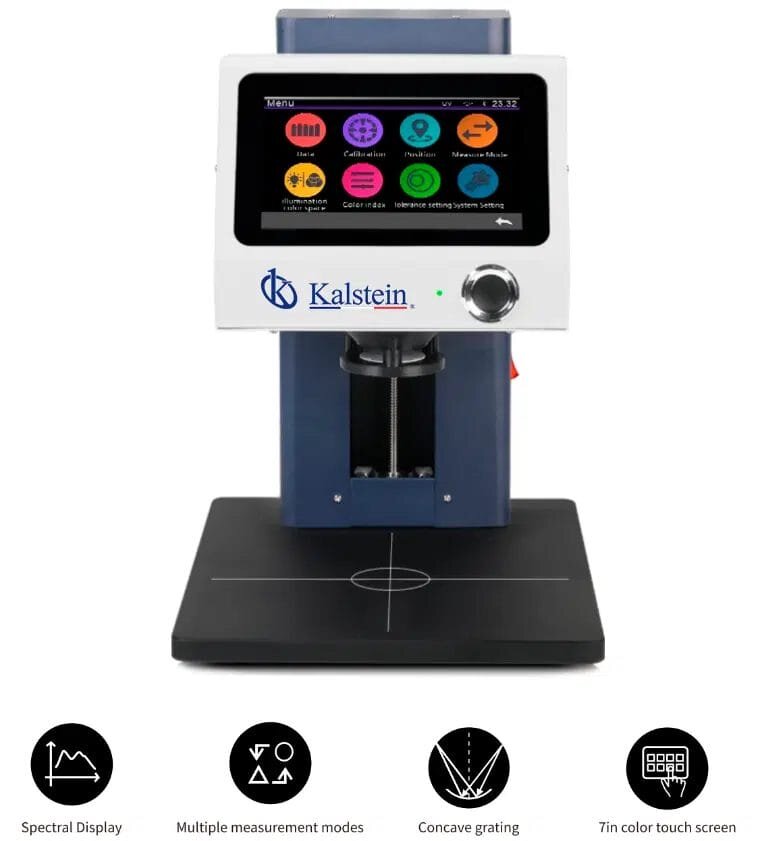Spectrophotometers have transformed the way research laboratories and medical institutions conduct their analyses. These devices, which measure the amount of light absorbed by a sample, are fundamental to a wide range of scientific applications. In this article, we will explore the benefits and unique features of spectrophotometers and how they address specific problems for users, optimizing content for SEO with keywords such as “medical innovation” and “laboratory research.”
Benefits of Spectrophotometers in Medical Innovation
One of the greatest benefits of spectrophotometers in the field of medical innovation is their ability to provide precise and reproducible results. This precision is crucial for the diagnosis of diseases and the research of new treatments. With a spectrophotometer, laboratories can analyze the concentration of biomolecules in a sample, which is essential for detecting specific biomarkers associated with various diseases.
Additionally, spectrophotometers allow for non-invasive and rapid sample analysis. This not only improves efficiency in laboratories but also reduces the waiting time for patients. The ability to obtain quick and accurate results is vital in clinical situations where time is a critical factor.
Unique Features of Spectrophotometers
Modern spectrophotometers are equipped with advanced features that enhance their functionality and ease of use. One such feature is the ability to perform multichannel analysis. This allows users to analyze multiple samples simultaneously, significantly increasing laboratory productivity.
Another unique feature is the integration of advanced software that facilitates data analysis. Spectrophotometers come with programs that not only collect data but also process and present it in easy-to-interpret formats. This is especially useful for researchers who need to analyze large volumes of data quickly and efficiently.
How Spectrophotometers Solve Specific Problems
One of the most common problems faced by laboratories is the variability in analysis results. Spectrophotometers solve this problem by providing consistent and reproducible results. This is due to their high precision and the quality of their optical components, which minimize variability in measurements.
Furthermore, spectrophotometers help address the issue of sample contamination. Thanks to their advanced measurement techniques, these devices can analyze samples without the need for direct contact, significantly reducing the risk of cross-contamination. This is especially important in research involving sensitive biological samples.
Medical Innovation: Recent Advances in Spectrophotometry
Spectrophotometry has seen significant advances in recent years, driven by medical innovation and the need to improve analysis techniques. New models of spectrophotometers offer enhanced capabilities, such as the detection of multiple wavelengths simultaneously. This allows researchers to perform more complex and detailed analyses in less time.
Moreover, the miniaturization of spectrophotometers has enabled their use in clinical and field settings. Portable devices can now perform real-time spectrophotometric analyses, which is crucial for applications such as patient monitoring in intensive care units or environmental sample analysis in field studies.
Spectrophotometers and Their Impact on Laboratory Research
In the realm of laboratory research, spectrophotometers play a crucial role by enabling the precise quantification of chemical and biological substances. This is essential in pharmaceutical research, where the dosage and concentration of compounds must be controlled precisely to ensure the efficacy and safety of medications.
Additionally, in molecular biology research, spectrophotometers are fundamental for the quantification of nucleic acids and proteins. The precision and reliability of these devices allow scientists to conduct complex experiments with a high degree of confidence in their results, thereby accelerating the scientific discovery process.
Future of Spectrophotometers in Medical Innovation and Laboratory Research
The future of spectrophotometers in medical innovation and laboratory research is promising. With the advancement of technology, these devices are expected to become even more precise and user-friendly. The integration of artificial intelligence and machine learning will enable spectrophotometers to not only collect and analyze data but also interpret results and offer recommendations based on complex patterns.
Furthermore, improved connectivity will allow the integration of spectrophotometers with other laboratory equipment and data management systems, creating a more efficient and cohesive work environment. This connectivity will also facilitate collaboration between laboratories and real-time data sharing, which can significantly accelerate the pace of scientific discoveries.
Spectrophotometers are essential tools in medical innovation and laboratory research. Their benefits, such as precision and speed in analyses, along with advanced features like multichannel analysis and integrated software, make them indispensable for researchers and healthcare professionals. By addressing specific problems such as result variability and sample contamination, these devices continue to revolutionize the field of science and medicine. With future technological advances, spectrophotometers are poised to play an even more critical role in advancing scientific knowledge and developing new medical therapies.
If you would like to explore the high-end products we have for you at KALSTEIN, visit us at https://kalstein.pk/category-product/laboratory-line/spectrophotometers-laboratory-line/. We assure you that through our easy and feasible online PURCHASE channels, you will find the best prices on the MARKET. Remember that at KALSTEIN, we MANUFACTURE high-level laboratory equipment for SALE. https://kalstein.pk/

